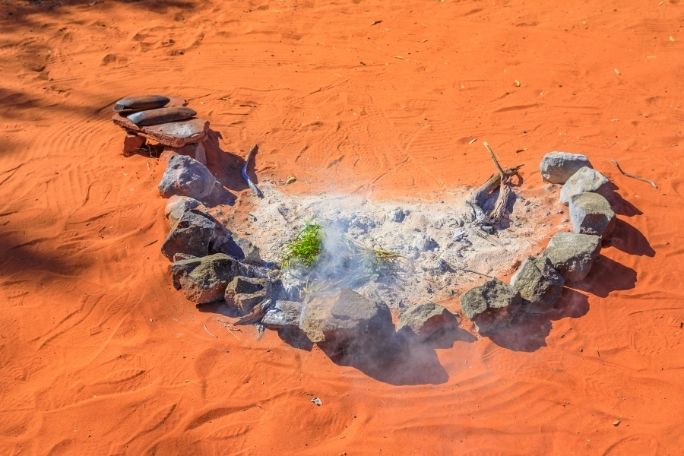Lesson summary
This lesson is based on the film Who We Are: Brave New Clan – Culture. Students will explore the concept of culture and how our experience of culture affects who we are. The lesson will begin by students looking for the similarities and differences between their experiences of school and family culture. Students will then work in groups to compare their experiences of cultures. They will brainstorm the ways our experiences of school and family cultures affects who we are and why a diversity of cultures in valuable.
Essential questions:
- What is culture?
- What are some different types of culture?
- What are some of the different cultures I belong to?
- How does our experience of culture affect who we are?
Lesson guides and printables
Lesson details
Curriculum mapping
The films and lessons presented in Who We Are: Brave New Clan have been designed to align with the organising ideas of the Australian Curriculum’s cross-curriculum priority of Aboriginal and Torres Strait Islander Histories and Cultures. Use of the film in a classroom setting will build teachers’ and students’ knowledge of, understanding and respect for Aboriginal and Torres Strait Islander histories, cultures, contributions and ways of life.
Australian curriculum content descriptions:
Year 4 HASS:
- The different cultural, religious and/or social groups to which they and others in the community belong (ACHASSK093)
Year 4 English:
- Use interaction skills such as acknowledging another’s point of view and linking students’ response to the topic, using familiar and new vocabulary and a range of vocal effects such as tone, pace, pitch and volume to speak clearly and coherently (ACELY1688)
Year 5 English:
- Use interaction skills, for example paraphrasing, questioning and interpreting non-verbal cues and choose vocabulary and vocal effects appropriate for different audiences and purposes (ACELY1796)
Year 6 English:
- Participate in and contribute to discussions, clarifying and interrogating ideas, developing and supporting arguments, sharing and evaluating information, experiences and opinions (ACELY1709)
- Use interaction skills, varying conventions of spoken interactions such as voice volume, tone, pitch and pace, according to group size, formality of interaction and needs and expertise of the audience (ACELY1816)
Syllabus outcomes: EN2-1A, EN3-1A.
Relevant parts of Year 4 HASS achievement standards: Students describe factors that shape a person’s identity and sense of belonging.
Relevant parts of Year 4 English achievement standards: Students actively contribute to class and group discussions and listen for and share key points in discussions.
Relevant parts of Year 5 English achievement standards: Students contribute actively to class and group discussions, taking into account other perspectives.
Relevant parts of Year 6 English achievement standards: Students contribute actively to class and group discussions.
Cross-curriculum priority:
- Aboriginal and Torres Strait Islander Histories and Cultures OI.4 – Aboriginal and Torres Strait Islander societies have many Language Groups.
- Aboriginal and Torres Strait Islander Histories and Cultures OI.5 – Aboriginal and Torres Strait Islander Peoples’ ways of life are uniquely expressed through ways of being, knowing, thinking and doing.
- Aboriginal and Torres Strait Islander Histories and Cultures OI.6 – Aboriginal and Torres Strait Islander Peoples live in Australia as first peoples of Country or Place and demonstrate resilience in responding to historic and contemporary impacts of colonisation.
General capabilities: Intercultural Understanding, Ethical Understanding, Critical and Creative Thinking, Literacy.
Unit of work: Who We Are: Brave New Clan – Culture.
Time required: 60 mins.
Level of teacher scaffolding: Medium – oversee discussion, lead students in activities.
Resources required
- Student Worksheet – one copy per student OR computers/tablets to access the online worksheet
- One printed copy of My cultural Iceberg for each student
- Butcher’s paper, textas. Sticky-notes (optional)
Skills
This lesson is designed to build students’ competencies in the following skills:
- Communication
- Empathy
- Social skills
- Collaboration
- Ethical understanding
Additional info
This lesson is produced in partnership with Cool Australia and the Narragunnawali: Reconciliation in Education team at Reconciliation Australia.
We acknowledge and pay respect to the past, present and future Traditional Owners, Custodians and Elders of this nation and the continuation of cultural, spiritual and educational practices of Aboriginal and Torres Strait Islander peoples.
We respectfully caution Aboriginal and Torres Strait Islander peoples that this resource may contain images and names of people who have passed away.We respectfully caution Aboriginal and Torres Strait Islander peoples that this resource may contain images and names of people who have passed away.


Welcome back!
Don't have an account yet?
Log in with:
By signing up to Cool.org you consent and agree to Cool's privacy policy to
store, manage and process your personal information. To read more, please see
our privacy policy here(Opens in new tab).
Create your free Cool.org account.
Many of our resources are free, with an option to upgrade to Cool+ for premium content.
Already have an account?
Sign up with:
By signing up to Cool.org you consent and agree to Cool's privacy policy to
store, manage and process your personal information. To read more, please see
our privacy policy here(Opens in new tab).